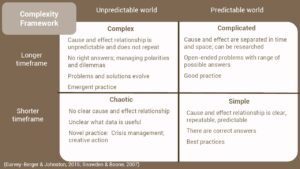The new reality: “The world is becoming more turbulent faster than most organizations are becoming more resilient.” Gary Hamel
Things are not only changing faster but different kind of things are changing in different ways. That requires leaders to learn faster, better and in different ways as well. Organisations need to adapt and innovate faster in totally new ways.
Leadership is most critical when directions and decisions are not clear because of VUCA (volatile, uncertain, complex, ambiguous), different interests and agendas, disagreements and conflicts, confusion, diverse needs, goals and values, disruptions.
The world is changing faster than most leaders can adapt. So they have to find ways to accelerate their learning. One of the most powerful vehicle for accelerated learning is executive coaching. Still many leaders don’t allocate time for their learning and don’t make efforts to reach out to expert support.
In stable environments, success comes from optimizing performance and current needs, while in VUCA sustainable success requires sub-optimizing current performance and investing in robust strategies that enhance flexibility and adaptability for the future. Therefore, leaders must make tough choices:
- How to sub-optimize parts to optimize the whole
- Manage short term and long term options
- Disrupt intentionally
COMPLEXITY FRAMEWORK
The framework categorises the issues leaders facing into four contexts/domains defined by the nature of the relationship between cause and effect. These are simple, complicated, complex, and chaotic. They require leaders to diagnose situations and to act in appropriate ways.

Simplicity requires straightforward management and monitoring. Instructions are direct and simple, decisions can be easily delegated, and functions are automated. When things appear to be going smoothly, leaders often become complacent. If the circumstances change at that point, a leader is likely to miss what is happening and react too late. Since changes are happening so fast, best practices quickly can become obsolete.
Leaders in the complicated domain must sense, analyse and respond. This approach require expertise to analyse data and the result can be several options, called good practices. Leaders’ role to give space for experts to do their job and must listen to them while simultaneously welcoming novel thoughts and solutions from others as well. One of the most typical obstacle here is ‘analysis paralysis’, when experts unable to reach a conclusion due to own biased individual thinking, and ego. Reaching decisions in this domain can often take a lot of time, and there is always a trade-off between finding the right answer and simply making a decision.
In the complexity domain instead of attempting to move into action, leaders must patiently allow the path forward to reveal itself. They need to probe first, then sense, and then respond. Leaders need to recognize that a complex domain requires a more experimental mode of management or I would say transformational leadership. They have to be patient when they don’t seem to be achieving the results they were aiming for. They have to expand their capacity not only to tolerate but to embrace failure, which is an essential part of learning, moving towards the unknown and experimental understanding.
In chaotic situations the primarily role of a leader is to do whatever necessary to establish order, create sense of stability, and then respond by working towards transforming the situation from chaos to complexity. Communication mostly direct, top-down, and there’s simply no time to ask for input.
As I see most importantly leaders need to improve in handling unpredictability and complexity nowadays. They need to expand their leadership capacity to become a transformational leader. They also need to learn how to navigate in the four domains above by flexing their leadership styles and develop their own practice of reflection in order to recognize the change in the context and have openness to change on an individual level.
- How comfortable are you with handling ambiguity and unknown?
- What do you need to learn? Where do you need to develop to successfully lead through complexity and unpredictability?
- What refection practice do you need to zoom out in order to be able to see the change in the context?
Source: David Peterson, 7th World Business and Executive Coach Summit 2017

